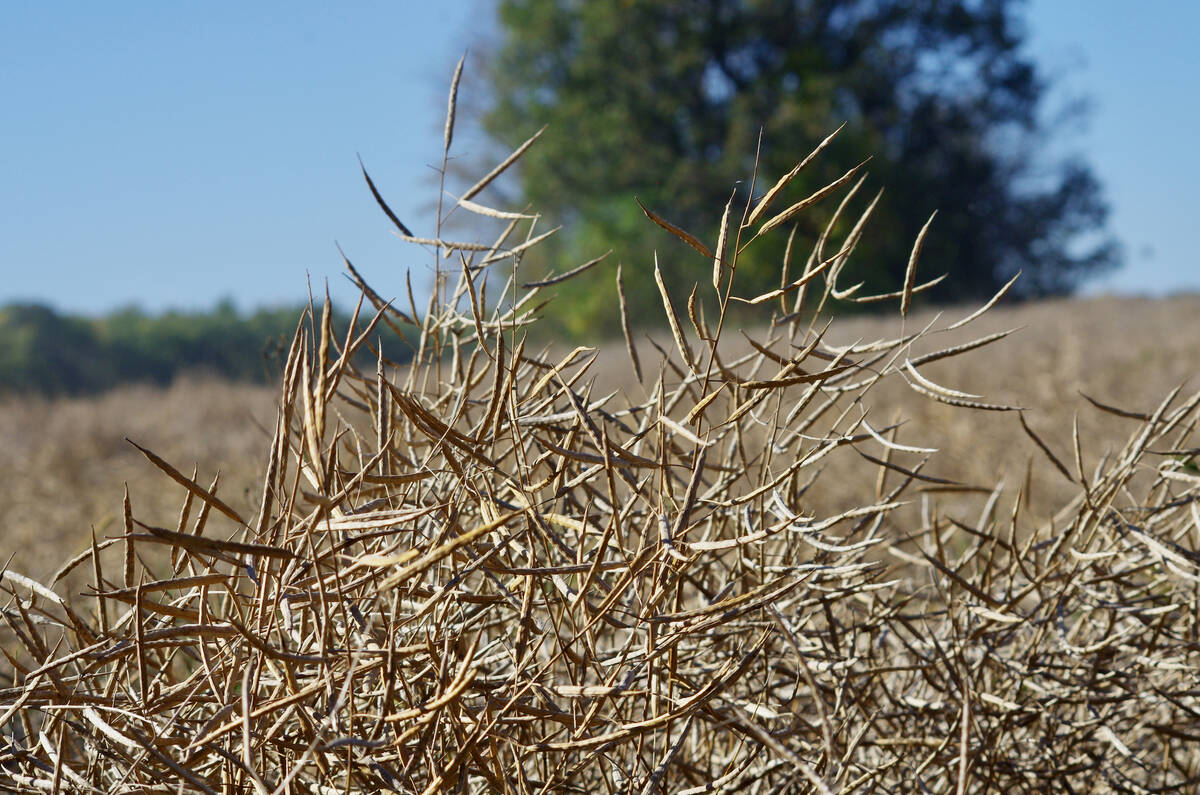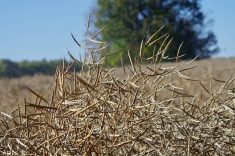Flax sold into Canada’s grain handling system this fall will be tested much more closely, at twice the previous cost, to try and cull any remaining genetically-modified seed from the supply.
The new testing requirements, effective Sept. 1, are expected to double the testing costs paid by producers, the Flax Council of Canada said in a release.
Growers currently must arrange for approved laboratories to test a two-kilogram representative sample, but, under the new requirement, the laboratory will draw and test four separate 60-gram subsamples from that two-kg sample.
Read Also

ICE Canada Weekly: Canola unlikely to have a good start to 2026
When canola trading begins returning to normal come Jan. 5, the oilseed’s futures are likely to fall back, said Tony Tryhuk, trader with RBC Dominion securities in Winnipeg.
All four lots must test as free of any genetics for CDC Triffid, a deregistered and never-commercialized GM flax variety, for the result to be deemed “negative.”
The industry called for the added procedure because using several subsamples “significantly increases the reliability of the test results,” the Flax Council said.
The move represents another of the industry’s “ongoing measures” to meet strict protocols to ship flax to the European Union, previously the single largest importer of Canadian flax and a stickler for zero tolerance of GM material in flax imports.
Testing in the EU in 2009 found CDC Triffid genetics in a shipment of flax from Canada.
Triffid, developed in Saskatchewan in the 1990s for tolerance to sulfonylurea herbicide residues in soil, was approved but then deregistered in 2001 without ever being sold as commercial breeder seed.
Canada’s flax industry had successfully lobbied for Triffid’s deregistration, for fear of losing its substantial export markets in Europe and other GM-shy markets if a GM flax were introduced.
But several importing countries shut their ports to Canadian flax last fall after Triffid appeared. Its genetic material was later found to have contaminated breeder seed of two conventional flax varieties, CDC Normandy and CDC Mons, while trace levels were found in three other registered flaxes.
From when Triffid first turned up in a German food company’s stocks last year, “significant progress has been made in determining the extent of the problem in Canada,” the Flax Council said, noting over 6,000 farm flax samples have since been analyzed.
“The need, however, for extensive testing continues so that flax may be segregated and moved to the appropriate markets.”
The council has asked flax growers for their “continued co-operation” in allowing the results of their tests to be collected, as such monitoring will allow the council to track the cleanup’s progress.















